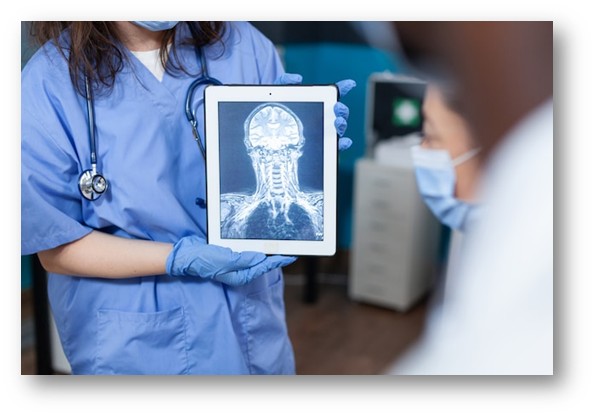
What is Radiology?
Radiology, often known as diagnostic imaging, is a collection of examinations that provide images of various body regions. Many of these tests are unusual in that they enable doctors to view within the body. This image may be obtained using a variety of imaging tests, including X-rays, MRIs, ultrasounds, CT scans and PET scans. Radiologists analyze a wide range of diagnostic procedures, including x-rays, ultrasounds, bone mineral density measurements, fluoroscopy, mammography, nuclear medicine, CT scans, and MRIs.
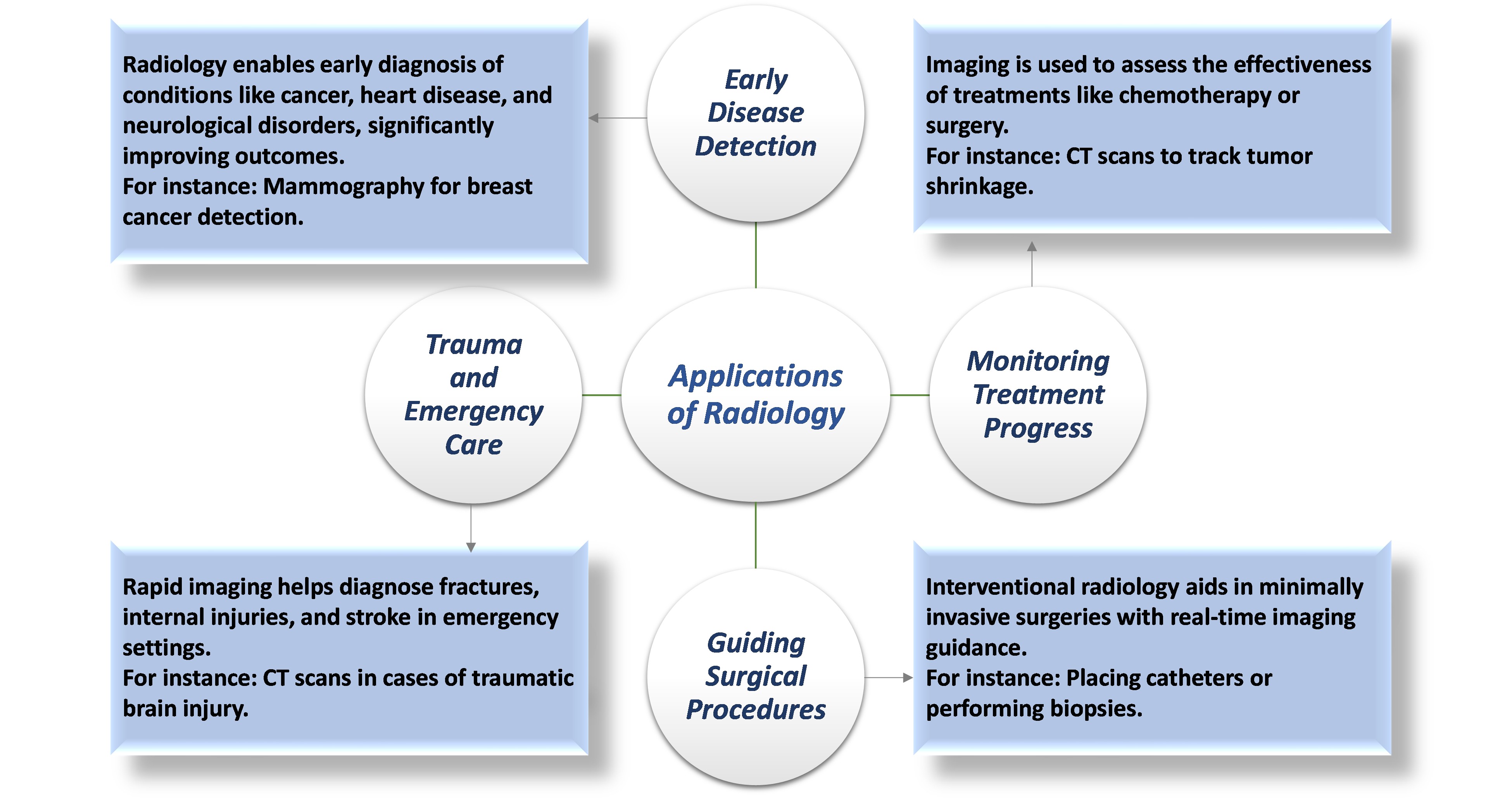
Types of Radiology
The field of radiology is divided into two areas. These are the following:
- Diagnostic Radiology
- Interventional Radiology

History of Radiology
Over the years, radiology has evolved dramatically, introducing technologies. Today, advancements in artificial intelligence (AI) and digital imaging are pushing the boundaries of radiology even further.
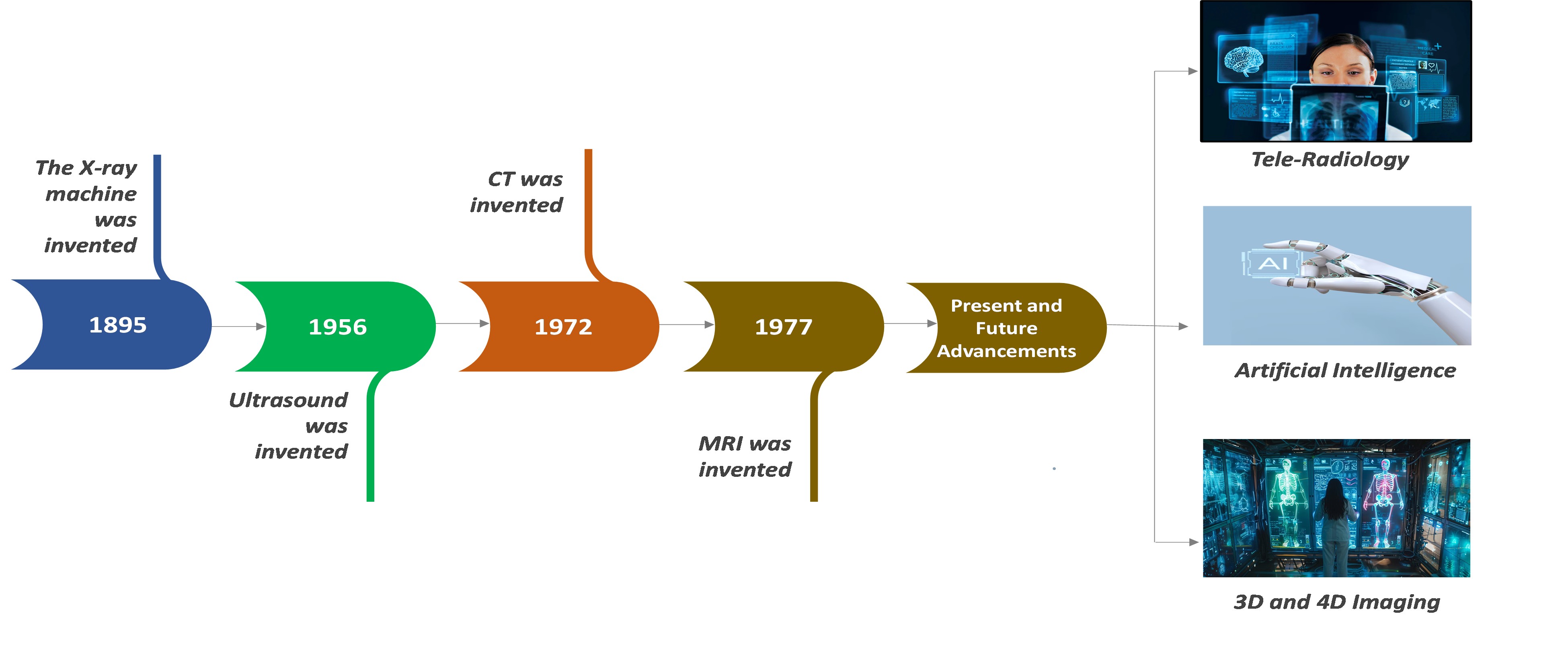
Market Segmentation:
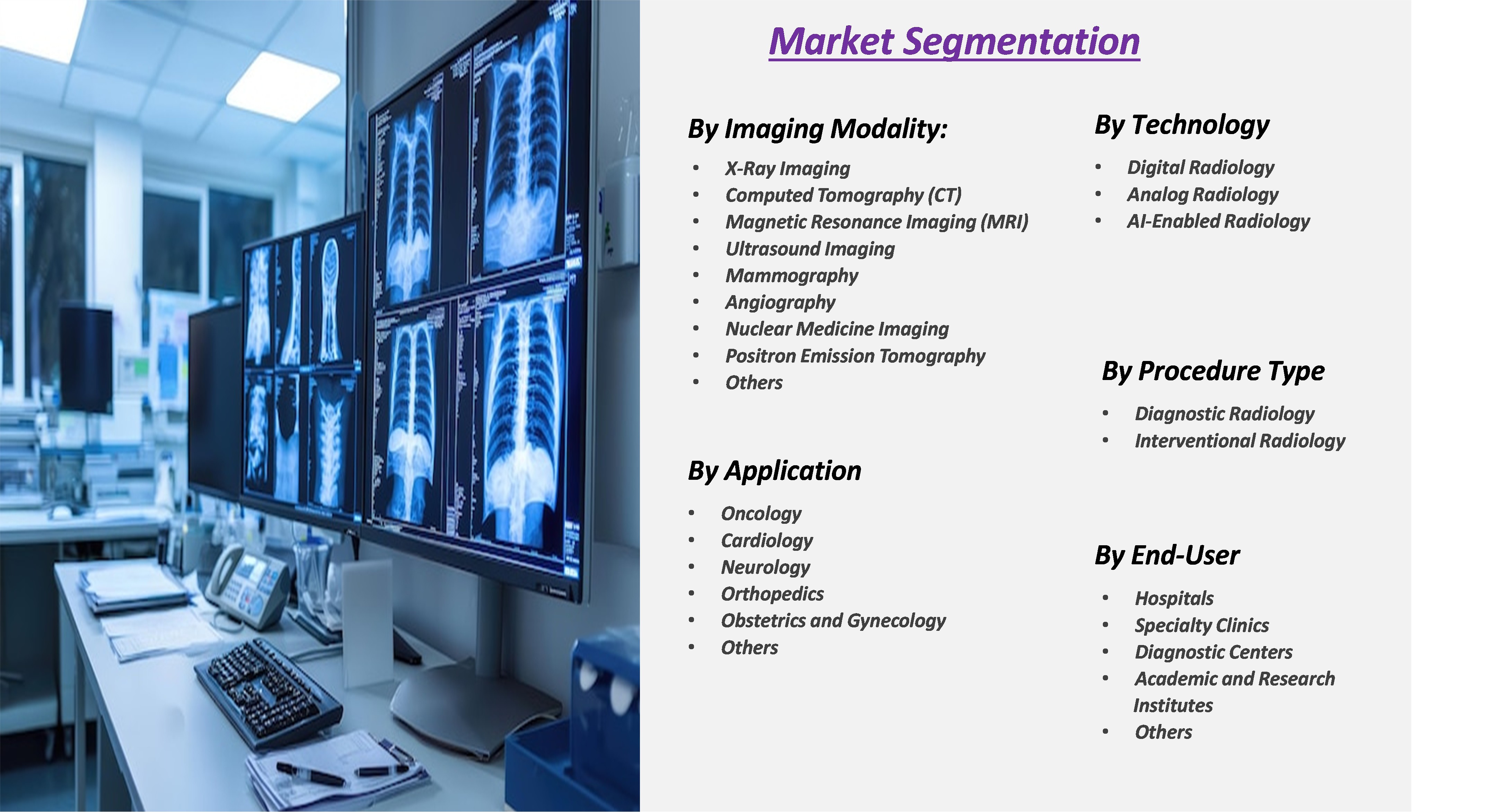
How the Radiology Market is Booming
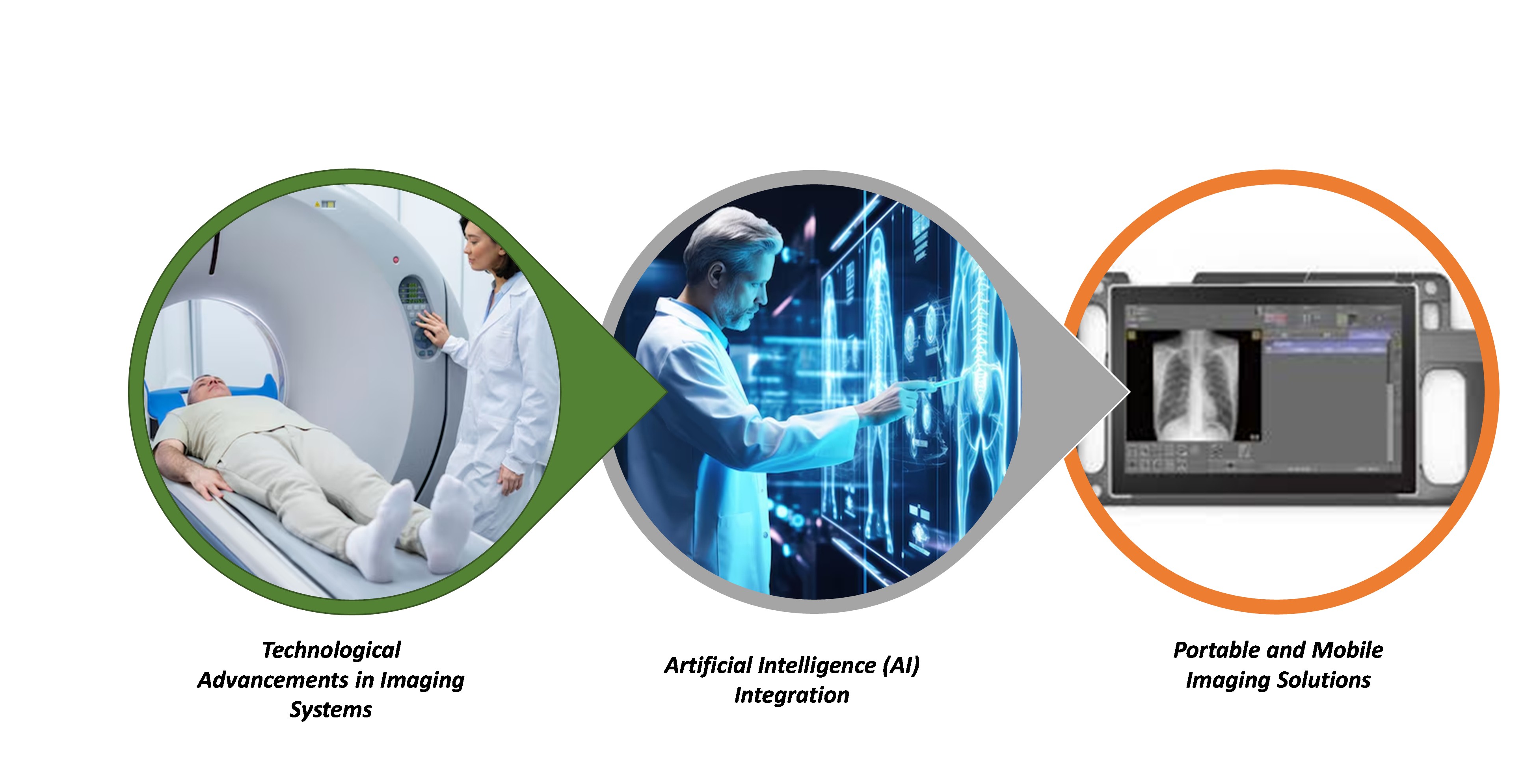
The global radiology market is booming, and several factors are driving its growth:
- Technological Advancements in Imaging Systems: The rapid development of advanced imaging systems, including 3D imaging and software-powered diagnostic tools has enhanced accuracy and accessibility.
- Additionally, in June 2024, Carestream unveiled Image Suite MR 10 Software to help radiographers increase productivity and efficiency while also providing a more user-friendly imaging experience, which includes a user-friendly interface, specialized measuring tools, and an optional Mini-PACS module, improves imaging performance for both Computed Radiography (CR) and Digital Radiography (DR) systems. These new capabilities help take Image Suite Software to the next level, providing a drastically better imaging experience.
- Artificial Intelligence (AI) Integration: AI is transforming radiology by automating image analysis, detecting abnormalities faster, and improving workflow efficiency.
- For instance, in September 2024, Harrison.ai launched Harrison.rad.1, a dialogue-based vision language model tailored to radiology that can engage in open-ended conversation about X-ray pictures. With a focus on clinical safety and accuracy, it can identify and pinpoint radiological abnormalities and provide reports.
- Portable and Mobile Imaging Solutions: Portable radiology devices especially X-ray, MRI and Ultrasound systems are expanding access to imaging in remote areas. These portable systems allow healthcare practitioners to simplify the process of imaging in traditional and non-traditional spaces.
- For instance, in January 2025, OXOS Medical revealed its MC2 Portable X-ray System by achieving FDA 510(k) clearance. This portable and cordless system allows healthcare practitioners to simplify the process of taking X-rays in traditional and non-traditional spaces. MC2 will have a profound impact on imaging by giving clinics clear imaging for a confident diagnosis, easy-to-use features for an efficient office and freedom to move the device where needed, without hassle. MC2’s small scatter area and low radiation output can reduce the space and infrastructure needs required by larger systems.
Why is the Radiology Market Hampering?
While radiology offers numerous benefits, it also comes with challenges and risks:
- Radiation Exposure Concerns: Prolonged exposure to radiation has raised safety concerns among patients and healthcare providers. For instance, according to the study conducted by the National Institute of Health (NIH), from 0.50 mSv in radiology alone to 2.29 mSv in diagnostic radiology, interventional radiology, and nuclear medicine, the average radiation dose from diagnostic radiology has grown dramatically. According to the most recent data, the chance of developing cancer has doubled for the same dosage. With current radiation exposure, the increased risk is 4.1% with revised risk estimations, the risk rises to 8.2%.
- Data Overload and Complexity: With the growth in the use of imaging technologies, radiologists are now tasked with interpreting a vast amount of data. Managing and analyzing these large volumes of imaging data can be overwhelming and increase the likelihood of errors.
- Complications from interventional radiology: Percutaneous arterial access can cause complications like hematoma, pseudoaneurysm, and arterio-venous fistula and skin side effects can include red or pink areas, itchiness, inflammation, and hair loss
Competitive Landscape
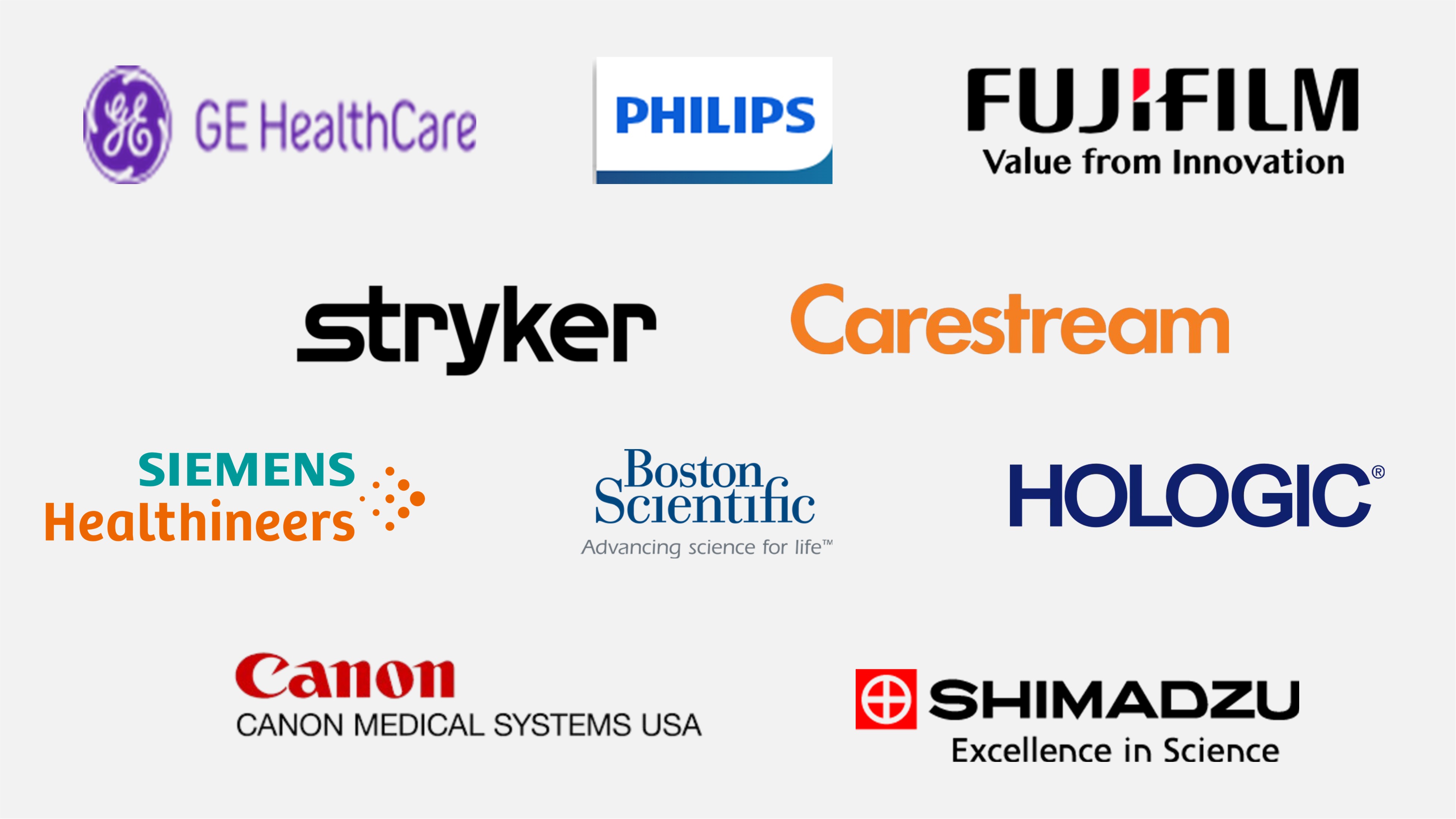
The Future of Radiology
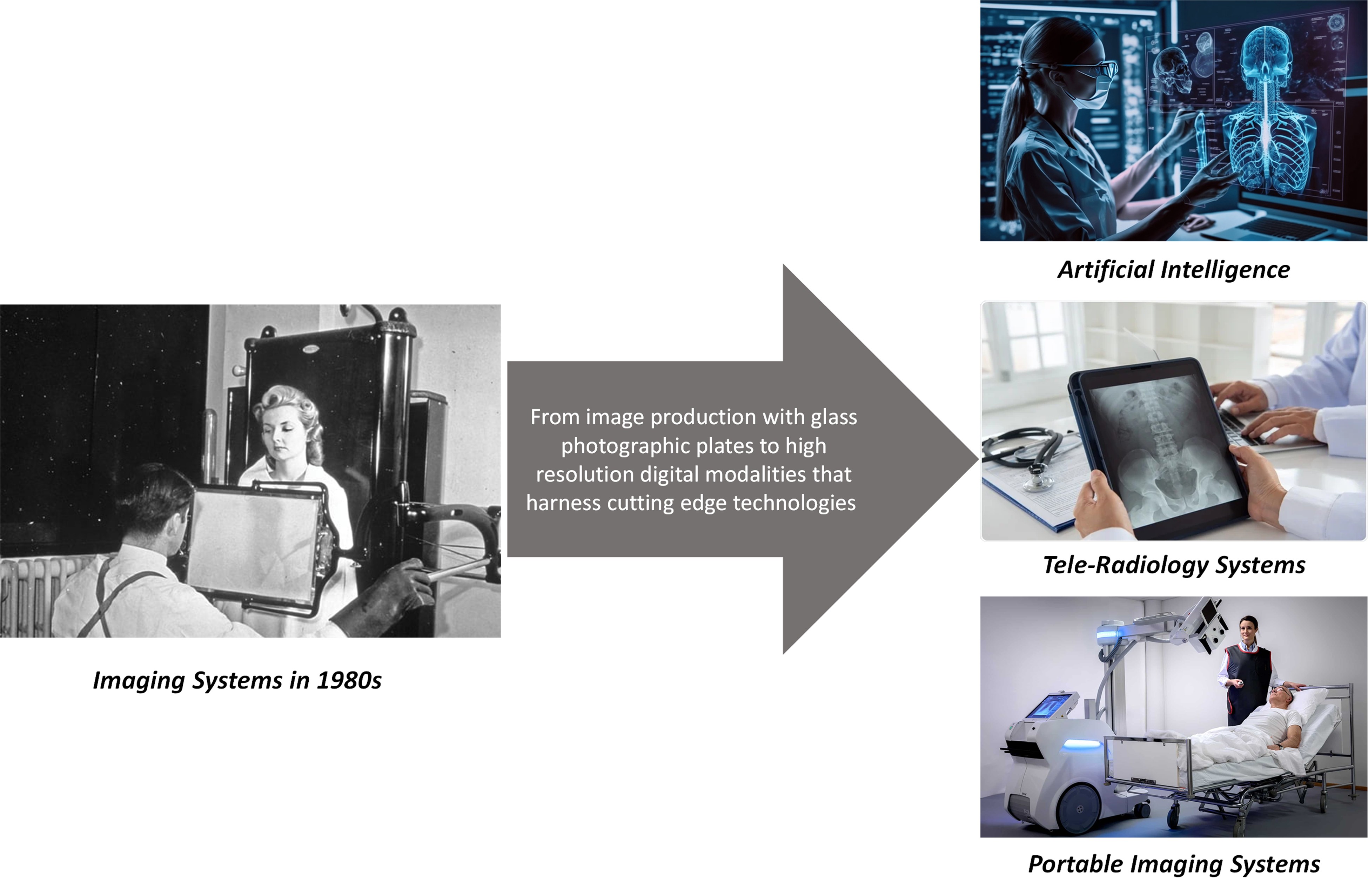
Radiology is not just about seeing what lies beneath; it’s about shaping the future of medicine and improving lives worldwide. The future of radiology looks promising, with continued advancements and innovations driving the field forward:
- Artificial Intelligence and Automation: AI will continue to enhance radiology by automating image analysis, reducing the workload for radiologists, and improving diagnostic accuracy. Over time, AI will likely become an integral part of radiology practices worldwide.
- Tele-Radiology: Tele-radiology, the practice of transmitting radiology images over long distances for remote interpretation, is becoming more widespread. This is especially important in rural areas or during off-hours, where access to on-site radiologists is limited.
- Personalized Medicine: With the increasing use of genomics and precision medicine, radiology will play a critical role in tailoring treatment to individual patients based on their imaging and genetic profiles. This will further improve treatment outcomes and reduce adverse effects.
- Enhanced Patient Experience: New developments in imaging, such as open MRIs and portable imaging units, are making radiological procedures more comfortable and accessible for patients. These technologies reduce anxiety and make it easier to accommodate those with claustrophobia or physical disabilities.
Conclusion
Radiology is more than just a medical specialty; it is a critical component of modern healthcare that influences the entire treatment journey. From providing life-saving diagnostics to guiding surgical interventions, radiology is shaping the future of medicine. As technological advancements continue to evolve, radiology will offer even more precise, accessible, and efficient solutions for diagnosing and treating diseases. Despite its challenges, the future of radiology is bright, with innovations like AI, portable imaging, and tele-radiology paving the way for more personalized and global healthcare solutions.

